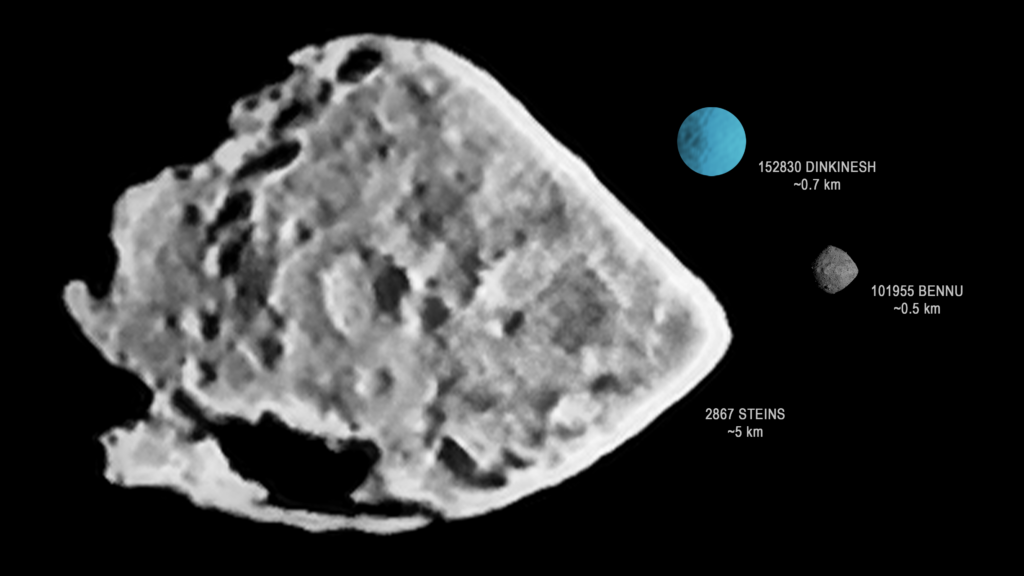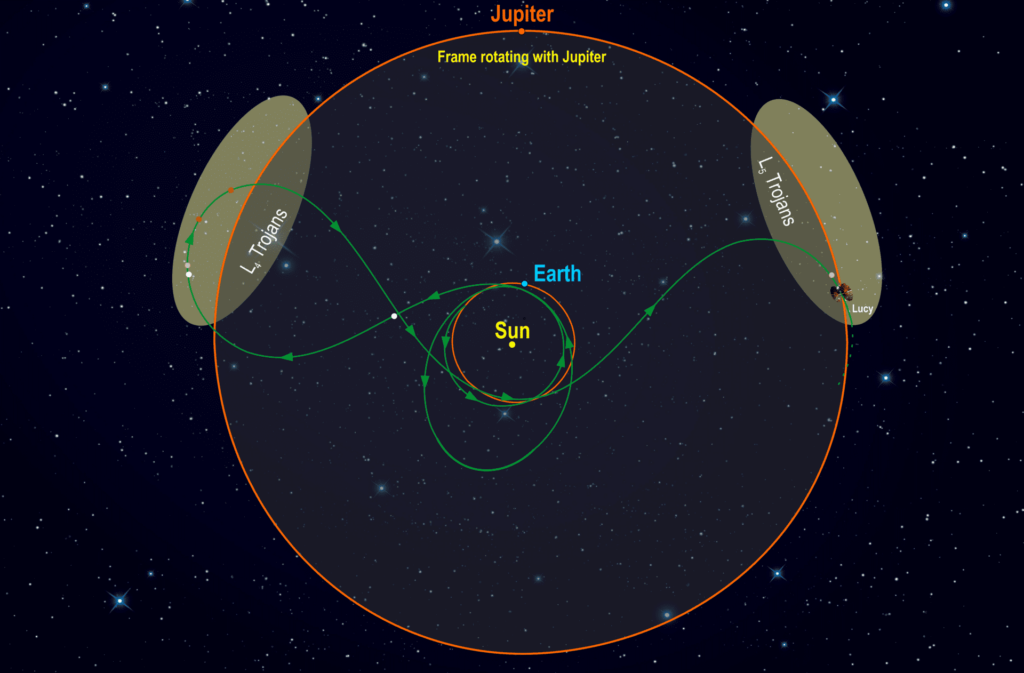The first asteroid to visit the Lucy probe has received its own name. It was named Dinkinesh, which translated from Amharic (the official language of Ethiopia) means “you are marvelous”.
Dinkinesh Asteroid
Dinkinesh was opened in 1999 and received the designation (152830) 1999 VD57. This is a small object with a diameter of about 700 meters, which orbits in the Main Asteroid Belt at a distance of 2.2 AU (330 million km) from the Sun.

Until recently, 1999 VD57 remained just one of many thousands of unremarkable rock bodies inhabiting the Main Belt. Everything changed after the specialists of the Lucy mission conducted a search for passing objects that could visit the spacecraft to its main target (two clusters of Trojan asteroids of Jupiter). They found that 1999 VD57 was within the probe’s reach.
After that, it was decided to give 1999 VD57 a full name. The name Dinkinesh was not chosen by chance. This is what they call Lucy in Ethiopia — the skeleton of an australopithecus discovered in 1974, which has become one of the most important anthropological finds in history. The Lucy mission was named after it. Thus, its developers emphasized that Trojan asteroids can be compared with ancient fossils, which study would make it possible to find out how the planets of the Solar System were formed.
Lucy Mission Flight Plan
In May 2023, Lucy will perform a series of course corrections. They will allow it to make a close flyby of Dinkinesh on November 1, 2023. The minimum approach distance will be 450 km.

Engineers use a rendezvous with Dinkinesh for training. They will test the effectiveness of the guidance system of the spacecraft. It is designed to determine the exact location of asteroids, which is required for planning an observation program and setting up cameras. In addition, Lucy will receive spectra and images of the Dinkinesh surface, which will allow it to calibrate its scientific instruments and check the effectiveness of their work. According to experts, it is expected that in the best of the images the size of the asteroid will be one hundred pixels.
After that, Lucy will continue its journey. In 2024, the probe will perform a gravitational maneuver in the vicinity of the Earth, in 2025 it will fly over another of the associated asteroids of the Main Belt, and in 2027, it will finally reach the first of two clusters of Trojan asteroids of Jupiter.
Earlier, we talked about NASA’s decision to temporarily stop trying to open the Lucy solar array.
According to https://www.nasa.gov
Follow us on Twitter to get the most interesting space news in time
https://twitter.com/ust_magazine

